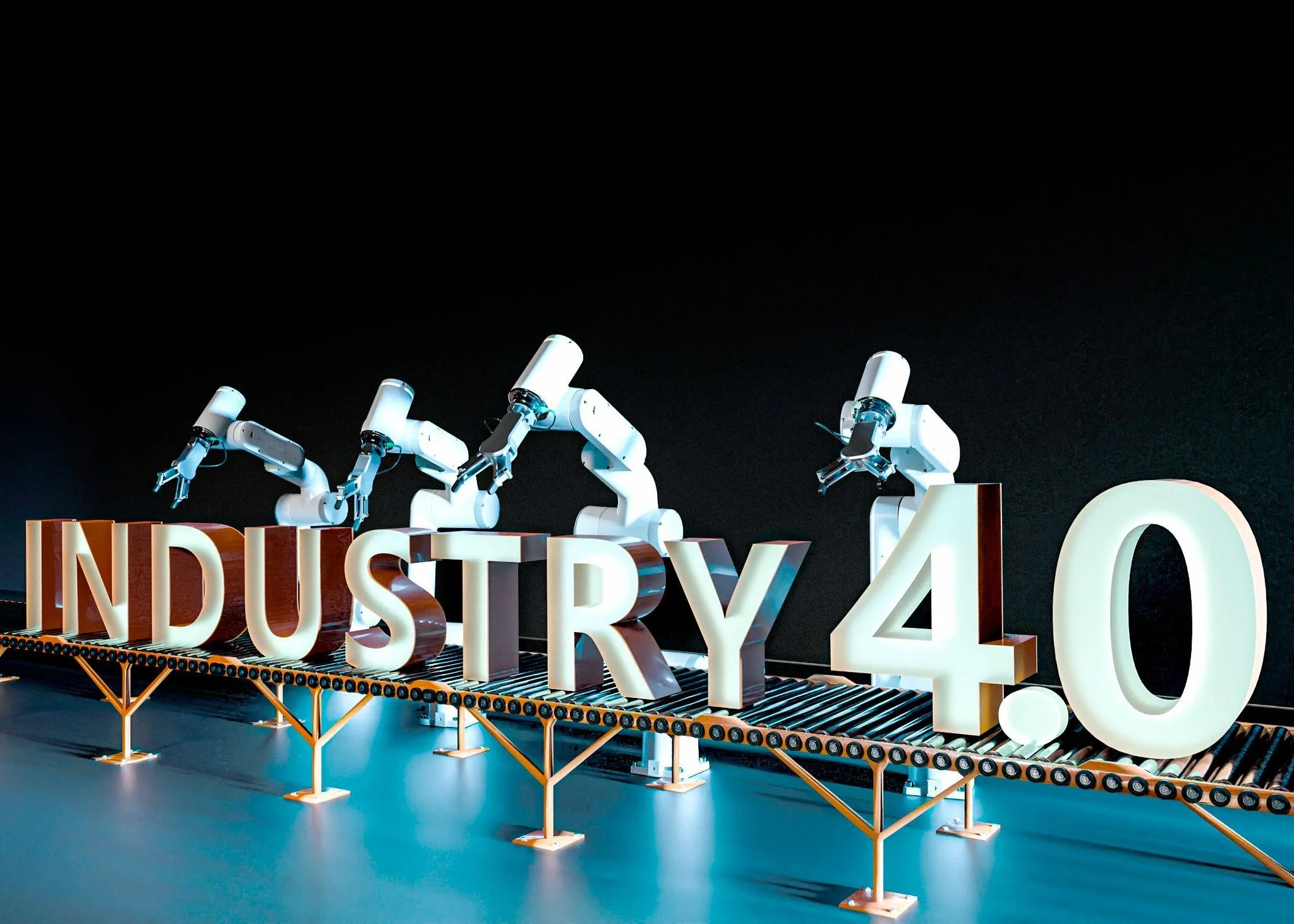Microsoft AI: Strategies to Upskill Your Workforce
Author: Inza Khan
Microsoft has undertaken a bold initiative to train 1 million individuals by 2025 through its ‘Get On program’. If we look at it Globally, the demand for roles requiring AI competencies is increasing and around 67% of fleet industry leaders have expressed their trust in AI drivers.
Although there’s an evident willingness amongst employees to embrace AI technologies, there is still a substantial knowledge gap that persists. To overcome these gaps, companies have to utilize Microsoft’s efforts with extensive training programs. From ethical considerations to hands-on experiences, a multifaceted approach is crucial in developing a workforce that is both competent and skilled in navigating the technicalities of AI.
As AI technology advances, the strategic imperative for organizations to invest in workforce upskilling has become important. Our blog explores actionable strategies and best practices that organizations can align with their workforce using Microsoft’s AI vision. These strategies will help them remain competitive and adaptive in the rapidly evolving digital era.
Why Corporations Hesitate to Embrace Artificial Intelligence?
Artificial Intelligence (AI) and its potential to reshape industries has been a topic of discussion, but corporations seem to be taking a cautious approach to its adoption. Microsoft AI plays a pivotal role in addressing these concerns and facilitating a smoother transition for corporations.
Known Risk Versus New Risk
Executives hesitate due to the perceived unknown risks of AI adoption. Microsoft offers tools for transparent risk assessment, providing executives with a clear understanding of potential risks associated with AI implementation. This empowers decision-makers to make informed choices, minimizing uncertainty in the adoption process.
Lack Of Control
Executives are concerned about relinquishing decision-making control to AI systems. Microsoft AI solutions are designed to augment human decision-making rather than replace it entirely. Features like responsible AI ensure that the decision-making process remains transparent, allowing executives to retain control while leveraging the benefits of AI insights. This approach fosters trust and confidence in incorporating AI into existing workflows.
Steep Learning Curve
Professionals face challenges with the steep learning curve associated with AI adoption. Microsoft’s AI tools prioritize user-friendliness and accessibility. By offering intuitive interfaces and extensive training resources, Microsoft helps professionals, even those with limited AI expertise, to navigate the adoption process more smoothly. This reduces barriers and encourages a broader range of professionals to engage with AI technologies.
Highlighted Inconsistencies
Decision-makers may face scrutiny and concerns over perceived inconsistencies in AI-driven decisions. Microsoft AI emphasizes explainability and transparency. Tools like Azure AI Fairness and InterpretML enable organizations to identify and address biases, ensuring that AI decisions align with organizational values. This commitment to transparency helps mitigate concerns related to perceived inconsistencies, building trust in the reliability of AI systems.
Financial Motivations
Corporations worry about prioritizing financial gains over societal objectives and potential job displacement. Microsoft advocates for responsible AI practices. Initiatives like ‘AI for Good’ demonstrate a commitment to using AI to address societal challenges. By promoting ethical and inclusive AI use, Microsoft helps corporations navigate the balance between financial goals and broader community objectives, addressing concerns about the potential negative impacts of AI adoption.
Strategies for Closing the AI Skills Gap for Your Workforce
Major industry players, including Amazon, Ericsson, and PwC, are making substantial investments in upskilling and reskilling initiatives. Amazon’s Machine Learning University, accessible to all employees democratizes AI skills across diverse roles. Despite these initiatives, a survey reveals that 40% of CEOs identify a significant obstacle – a lack of AI-related knowledge within their HR teams. This emphasizes the critical need for comprehensive upskilling strategies that must span across all organizational functions.
Adapt Skills Frameworks: Tailoring Skills for AI Integration
To effectively integrate AI into organizational workflows, the adaptation of existing skills frameworks is necessary. This involves a thorough revision and enhancement process. Organizations must strategically choose between creating distinct categories for AI-specific skills or integrating them seamlessly into existing ones based on their criticality in specific roles. This decision-making process extends to the tailoring of assessments, benchmarking against industry standards, and optimizing resources for efficient upskilling efforts.
Agile Skills Gap Analysis: Staying Ahead of Evolving Competencies
With the dynamic nature of AI, a traditional approach to skills gap analysis is insufficient. To take it to another level, organizations should actively engage with industry associations, online communities, and AI-focused forums to stay informed about the latest insights. Using AI tools such as generative AI, data analytics, and visualization can optimize real-time skills gap analytics. These tools empower L&D teams to proactively identify emerging gaps, adapt course content, and ensure alignment with the rapidly changing AI landscape.
Fostering a Continuous Learning Culture: Beyond Upskilling and Reskilling
Continuous learning is not only the responsibility of L&D teams but a collective effort involving the entire workforce. In an environment where skills are in constant flux, cultivating a culture of continuous learning is vital. Organizations must ensure leadership commitment by actively encouraging a culture of learning and growth. This involves setting and communicating a clear vision for ongoing skill development, providing accessible learning opportunities, recognizing and rewarding employees’ learning efforts, and integrating learning into the flow of work. An environment where mistakes serve as learning opportunities promotes resilience, growth, creativity, innovation, increased engagement, and retention.
Adapting Learning Programs: Hands-On Experiences and Collaboration
Learning programs that encourage the growth of AI-related skills are important. AI skills are best acquired through real-world applications and hands-on experiences through AI-related projects. This practical, learning approach trains employees in different AI scenarios, allowing them to apply their knowledge and gain valuable experience. Collaboration, mentoring programs, and participation in AI-focused communities contribute to collective learning. The integration of AI-driven platforms with adaptive learning paths further enhances personalized learning experiences. These tools adapt content based on individual progress, focusing on areas that need the most improvement, making AI skill development more efficient. The incorporation of credentials and certification for structured learning paths adds a layer of validation to acquired AI skills.
AI Training and Implementation at Workplace
Organizations are confronted with the imperative to equip their workforce with the skills essential to navigate alongside emerging technologies, particularly Artificial Intelligence. The potential benefits are immense, ranging from enhanced productivity and creativity to improved efficiency and a competitive advantage. However, the key lies not just in providing access to these powerful AI tools but in a strategic approach that emphasizes practical training and a nuanced understanding of context and prompts.
Practical Training
- Beyond Tutorials: Instead of limiting training to basic tutorials, organizations should provide comprehensive and specialized learning experiences. This involves in-depth training on the functionalities, features, and real-world applications of AI tools. It may include partnerships with experts or internal programs designed to delve deeply into the tool’s capabilities.
- Hands-on Learning: Practical expertise must be achieved through hands-on experience. This means integrating exercises, simulations, and real-world challenges into the training program. It allows the workforce to apply theoretical knowledge in practical situations, fostering confidence and proficiency.
- Industry-Specific Focus: Recognizing that different industries and roles have distinct needs, training should be tailored to maximize real-world applicability. Customized training ensures that the workforce gains skills directly relevant to their specific tasks.
Understanding Context and Prompts
- Contextual Awareness: AI tools excel when used within specific contexts. Training teams to understand the strengths and limitations of tools in particular contexts is crucial. This involves recognizing when to leverage a tool’s capabilities effectively, considering its compatibility with the task at hand.
- Mastering the Prompt: Crafting effective prompts is an essential skill. Teams should be trained to provide clear, concise, and specific prompts that supply the AI with the necessary information to deliver relevant and accurate results. This ensures that the AI understands the user’s intent correctly.
- Critical Thinking and Evaluation: Teams need to critically evaluate the outputs of AI tools. This involves assessing whether the generated results align with the task, context, and desired outcomes. Critical thinking ensures that the AI’s suggestions are appropriate and contribute meaningfully to the intended goals.
Ethical Implications and Ongoing Support:
- Ethical Considerations: Training should address ethical concerns associated with AI use. This includes educating the workforce about potential biases, data privacy considerations, and the responsible use of AI tools. Ethical training ensures that the workforce is aware of the societal impact and implications of using AI.
- Ongoing Support: AI is a rapidly evolving field, therefore, providing continuous support and resources is essential to keep the workforce updated on new features and functionalities. Ongoing support ensures that the workforce can adapt to changes and maximize the benefits of evolving AI technologies.
Change Management:
- Smooth Adoption: Introducing new AI tools can be disruptive. Change management strategies should be in place to ensure a smooth adoption process. This involves phased implementations, feedback collection, and adjustments before widespread deployment. Smooth adoption minimizes resistance and maximizes user buy-in.
Conclusion
Our exploration of strategies to align the workforce with Microsoft’s AI vision highlights the multi-faceted approach required to bridge existing knowledge gaps. From embracing AI-powered automation to harnessing intelligent chatbots and integrating AI tools, organizations must not only adapt but innovate in their approach to skill development. The strategies for closing the AI skills gap delve into the proactive steps organizations can take to stay ahead of evolving competencies. From adapting skills frameworks and agile skills gap analysis to fostering a continuous learning culture and hands-on learning experiences, each approach plays a pivotal role in creating a workforce that is not only competent in AI technologies but also adaptable and innovative.
Clearly, the future of work is intertwined with AI, and organizations must embrace agility, innovation, and a commitment to continuous learning. The transformative journey towards an AI-powered future is not without its challenges, but with strategic upskilling initiatives, organizations can position themselves not just to survive but to thrive in the rapidly evolving digital landscape.




